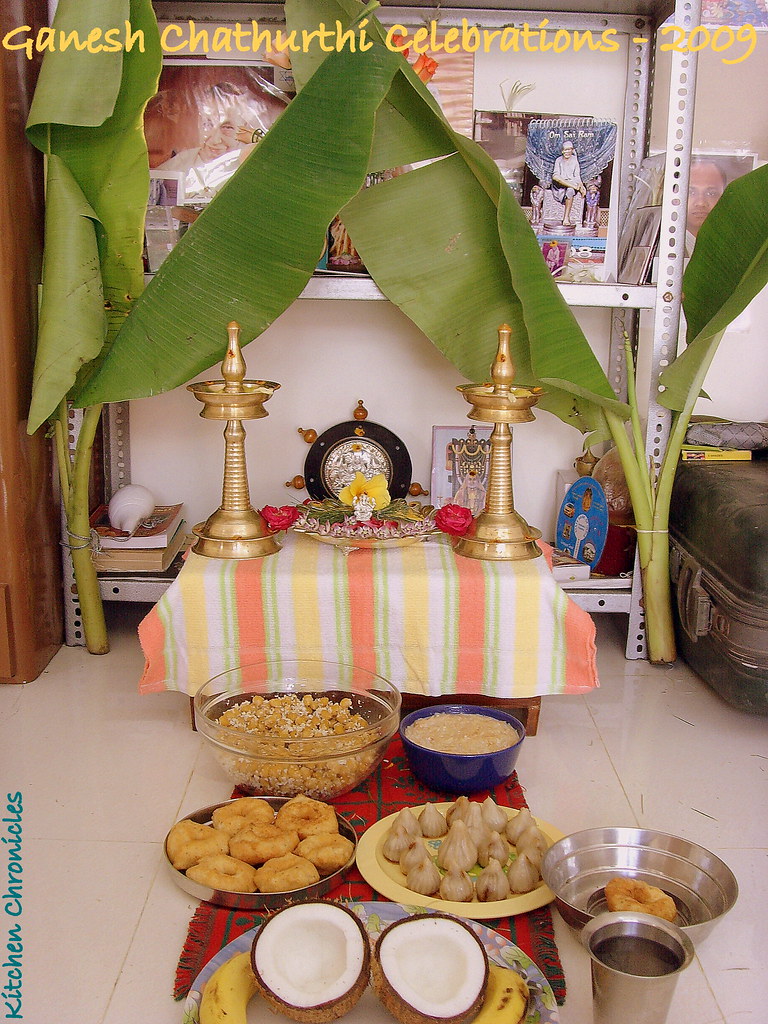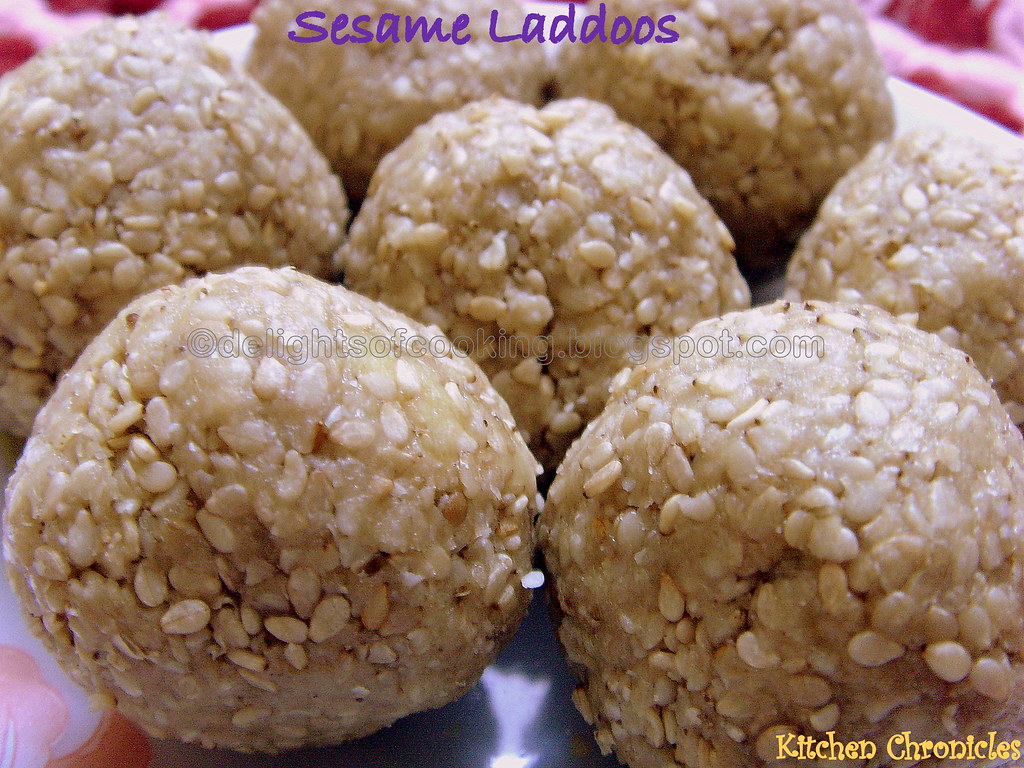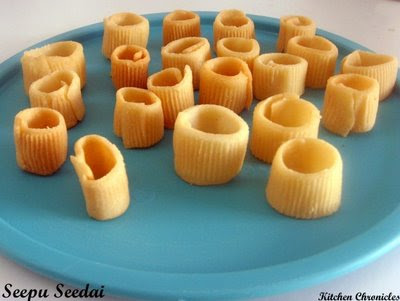I always make typical Tamil Nadu style modakam for ganesh Chathurthi. But since it was this months challenge in Indian Cooking Challenge to try other state specials for Ganesh Chathurthi I made Modak and Boorelu (Sesame Laddoo). Both of them came out very well. And before I could take a close up photo of the Modaks it had vanished.

Recipe for Modak
Stuffing -
2 cups freshly grated coconut (can use frozen unsweetened coconut)
1 cup jaggery (grated)
1 tbsp poppy seeds
1 tsp cardamom powder
one pinch nutmeg (optional)
2 tbsp water (mom uses milk)
Cover -
1 cup rice flour
1.25 cup water
pinch of salt
1 tbsp oil
Preparation for Stuffing -
Roast poppy seeds in a small skillet and let it cool down. Grind it coarsely and keep it aside.
In a heavy bottom kadhai mix all the ingredients for stuffing except poppy seed powder and let it sit for 15 min. Now start heating the mixture over medium heat. In about 10-12 minutes, the mixture starts boiling and stuffing will turn yellowish brown and will be sticky. Take the kadhai off the heat, add poppy seeds powder and mix well. Set it aside to cool down.
Preparation for cover -
Take vessel that has tight fitting cover. Start boiling water in that vessel, add salt and oil. When water starts boiling, lower the heat and slowely add rice flour. Please do now dump everything at once. Start mixing vigourously with a heavy spoon. Now close the lid and take the pot off the heat. Let the covered pot cool down for 15 minutes or so. Then with wet hands, mix the dough properly. It will warm so be careful and use cold water to keep your hands from burning but do not use too much water. if you think the dough is little sticky, I will suggest add 1-2 tbsp maida to it and make the dough.
Making Modak (Final Product) -
Start boiling water in a large vessel that can fit a steamer. I use a stainless steel steamer that fits on a pressure cooker and water doesnt touch the steamer and use stainless steel plate to cover it. Oil the steamer and set it aside.
Make about 20 balls of the dough and 20 parts of the stuffing. Start making small puri with the dough ball on a oiled paper/aluminum foil. Keep one part of stuffing in the middle of the puri and gather the puri gently to make shape like modak. You can see the picture here - http://www.hotelshreyas.in/photo/modak.jpg. You will have to handle the dough very gently. Follow the step to make remaining modaks. Now dip each modak in cold water and put it in the steamer. Put the steamer on boiling water and cover it. Let the modaks steam for 20 minutes on medium to high heat. Take the steamer off the vessel and let it sit for 5 minutes before removing moodak from steamer.
Recipe for Nugul-untallu (Sesame Laddoos)

Dry roast sesame in a tawa and let them cool. Once they are cool, take about 2 - 3tbsp of grated or powdered jaggary and run in a mixie. The amount of jaggary normally depends on the formation of laddoo. When you make a laddoo, it should stay in shape. Then you know the amount is enough. Also it depends on the fineness of the sesame powder. When you run in mixie, it becomes little oily which will help in holding the laddo shape.
For about 100 gms of Sesame seeds, I must've used some 3 tbsp of Jaggery. This should easily stay for a week, but I have known it to happen as it never stays that long at home! I got around 12 -15 laddoos with the size I made.
The recipe called for black sesame seeds, but since I had only the white ones, I used them. And as srivalli said it tastes out of the world.















